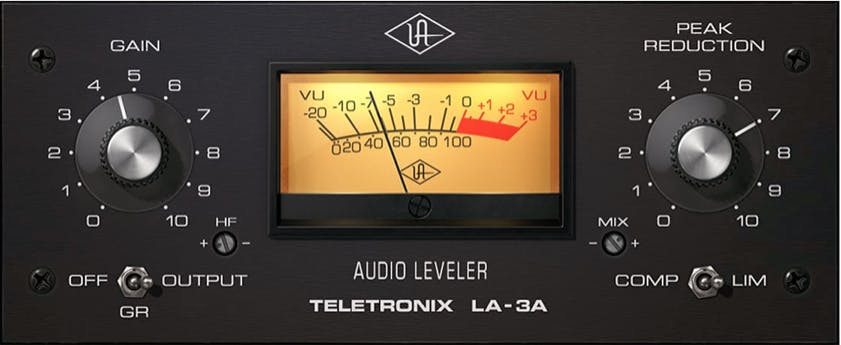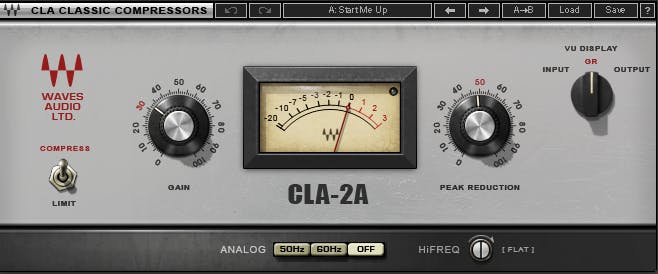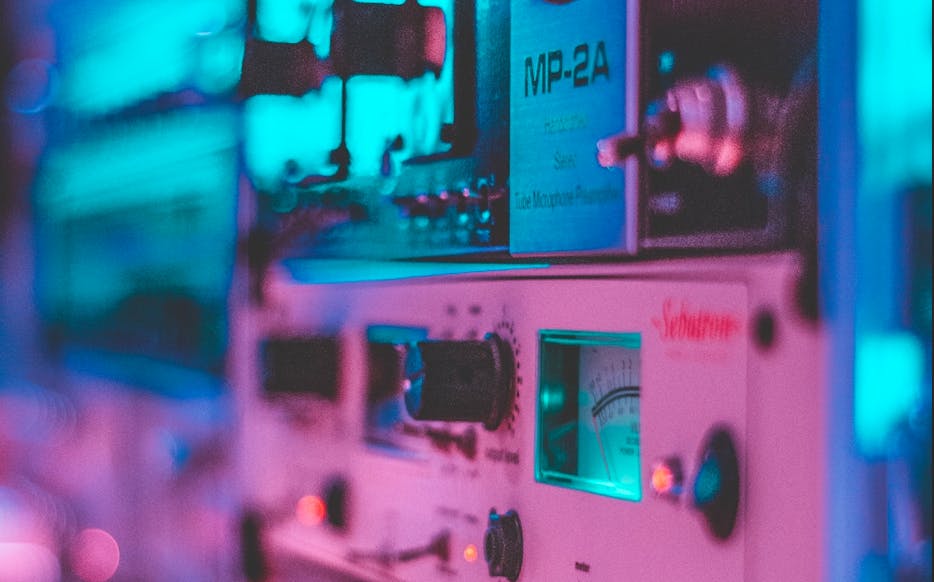An optical compressor seems like the simplest solution for plug-and-play tracking and mix compression. With only two main controls, output gain and gain reduction (threshold), things couldn’t get much easier. However, if you care to delve a bit deeper into the operation of an opto compressor, things become more interesting and the compressors can be that much more effective. This discussion mainly pertains to plugin models of opto compressors, but much of this discussion can be extended back to using the physical hardware. Hardware units may require a screwdriver to get into some of these options, but many newer hardware units provide more user-friendly access to these parameters.

What and Why Opto?
Optical compressors date back to the 1950s when Telektronix (which eventually became part of Universal Audio) debuted the LA-1 compressor. By the mid-1960s the LA-1 developed into the current LA-2A compressor design— which has become a staple both as recording hardware and DAW-based software. Universal Audio manufacturers an extremely popular hardware reissue of the original LA-2A to this day.
The magic of the LA-2A, and every other optical compressor that followed lies in an optical circuit that acts as the level control, or attenuator. In effect, the audio signal lights a small light panel and a nearby photoresistor senses the light and controls the behavior of the gain reduction. The compressor then adds make-up gain with a tube amplifier (LA-2A) or a solid-state amplifier (LA-3A).
The user-adjustable parameters of an opto compressor are output gain and gain reduction (threshold). The fixed attack is fast, while the fixed release happens in two stages as described above, and would be generally characterized as slow. The LA-2A provides two modes: compress (3:1) and limit (100:1). Remember that the frequency-dependent nature of the opto blurs these parameters a bit—in a musically helpful way. Most digital models of the LA-2A and LA-3A provide an emphasis control (sometimes labeled pre-emphasis) that often looks like a slotted screw. This screw exists on the original hardware units (sometimes on the rear panel) and was factory set and perhaps adjusted by a studio tech to suit the studio’s preferences. The emphasis control was designed to provide radio stations with better control over the broadcast signal’s high-frequency content.

But, the Sound!
Optical compressors may contain tubes and transformers, or they may be solid-state and even transformerless. Their compression behavior remains natural and smooth regardless of a tube or solid-state engine, and the distortion and sonic color of a specific opto compressor relate to the amplifier circuitry, not the compression action. Many companies besides Universal Audio produce optical compressors and each design may use a slightly different opto device, so their attack and release times may differ, or even be user-selectable. As optos age, they become weaker, so after only a few years, the performance of an opto compressor may suffer until the opto module is replaced. The LA2A and many other opto compressors use a plugin-in opto module referred to as a T4, which are readily available from a few manufacturers for around USD 100.
I find opto compressors extremely useful for tracking vocals and acoustic instruments. It’s almost impossible to ruin a take with an opto compressor and between the tube (LA-2A) and solid-state (LA-3A) versions, you can capture a clean or harmonically rich track. When mixing, it really helps to delve deeper than simply adjusting the gain reduction and output knobs, so you can dial in precise variations of compression to fit the track you’re working on.
Many engineers swear by using an opto and a FET or VCA compressor in series, but before you get into that, spend some time learning to dial in the opto. Let’s get into the gritty details of the Universal LA-2A and LA-3A. Then I’ll provide a list of other optical compressors that provide similar compression with more or less character. Every DAW provides a stock opto compressor, so you won’t even have to purchase anything to get into these comps.
More Parameters than Meets the Eye
The basic parameters of an opto compressor are output gain and gain reduction (threshold). The attack is more or less fixed at around 10 microseconds, while the release happens in two stages as described above, and would be generally characterized as slow. The LA-2A provides two modes: compress (3:1) and limit (100:1). Remember that the frequency-dependent nature of the opto blurs these parameters a bit—in a musically helpful way. Most digital models of the LA-2A and LA-3A provide an emphasis control (sometimes labeled pre-emphasis) that often looks like a flat-head screw. This screw exists on the original hardware units (sometimes on the rear panel) and was factory set and perhaps adjusted by a studio tech to suit the studio’s preferences. The emphasis control was designed to provide radio stations with better control over the broadcast signal’s high-frequency content.
This emphasis control, to me, elevates the opto compressor to an extremely precise and versatile mixing compressor. The emphasis control adjusts the sidechain’s frequency sensitivity. When the emphasis is set to Flat, the detector is equally sensitive to all frequencies, but when the emphasis is set to HiFREQ, the detector is less sensitive to low frequencies and more sensitive to highs. This may seem trivial, but I find it key to dialing in precise compression for vocals, bass and guitar.

When an LA-2A is set for 2 or 3dB of compression on a vocal with the emphasis control turned towards flat, the compressor will sometimes grab the vocal causing loud or powerful syllables to get yanked down in level. This effect leads to an uneven compression effect and can even choke certain words. With the emphasis turned towards HiFREQ, the compression will lessen and the threshold (peak reduction) can be adjusted to reactivate the compression effect. Now, the compression will be more transparent, more even, and less grabby. I play the emphasis setting against the threshold to find a combination where the vocal sits just right in a track.
For most vocals, only 2 or 3dB of compression will hold a vocal still in a mix, but often a few more dB of compression sounds fine. If I find that the vocal still moves around too much, I’ll switch from the compression mode to the limit mode, which provides a bit stiffer control. For upright and electric bass, I often use much more extreme amounts of compression and word has it that Elton John’s shimmering piano sound relies on about 10dB of compression from a pair of LA-2A compressors.
LA-2As produce a bit of mid and low-frequency harmonics, while the LA-3A provides some brighter harmonics, so you may find that different sources are well served by either device. Bob Clearmountain has been known to favor LA3As for vocals for many decades. Plugins emulate hardware to some extent, and each plugin version imparts its own character. I find many plugin optical compressors useful for mixing, and I really only use hardware optical compressors (or any hardware compressors) during tracking sessions.
Here is a list of some excellent plugin optical compressors:
- UAD LA-2A and LA-3A – recreations of all the versions of the historic optical compressors that started it all.
- AVID BF2A and BF3A – Avid’s Bomb Factory recreations. No emphasis control is provided.
- Logic Pro X Compressor – just set it to Vintage Opto. Also provides wet/dry mix and adjustable distortion modes.
- Waves CLA-2A and CLA-3A – Waves’ recreations of the original.
- Softube’s TubeTech CL1B – a recreation of the venerable Tube Tech hardware CL1B.
- Izotope Ozone Vintage Comp – Izotope’s take on the vintage tube opto compressor.
- Plugin-Alliance Opticom XLA-3 – software emulation of the ACME Opticom.
- Plugin-Alliance bx_Opto– software Opto that leans towards the LA-3A sound.
- IK Multimedia T-Racks Opto-compressor, White 2A – two variations on the LA-2A.
Here are some excellent hardware optical compressors that are still in production today:
- Universal Audio Telektronix LA-2A – the ultimate reissue of the original unit.
- Manley ELOP+ – possibly the most musical optical compressor ever made.
- Tube Tech CL1B – extremely popular for vocal tracking. Provides variable attack and release controls as well as fixed modes.
- Inward Connections TSL-5 (tube) and Brute (solid-state) – the ultimate opto compressors. My go-to tracking compressors for vocals and bass.
- Pendulum OCL-2 – an opto compressor made for the mix bus.
- IGS Audio, Warm Audio, Klark Teknik, ART, and Golden Age all produce affordable optical compressors with excellent specs and sound.

Continue learning by reading our other tips and tricks here.




